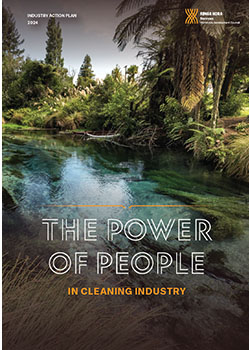
This year our visual theme for each of the Industry Action Plans has been developed with a Te Ao Māori context in mind.
For the Cleaning industry we lean into the symbolism of Wai Māori, symbolising the purifying and refreshing nature of cleaning services.

The Cleaning industry is one that can offer a variety of pathways for kaimahi to not only enter employment, but also owning their own businesses. The industry will continue to enable and empower kaimahi by providing them with opportunities to upskill and adapt. As well as helping businesses to operate more effectively and efficiently, the industry will help to shift the turn-over dial and smooth the pathways for people within the industry.
We can see that a growth in Māori-owned businesses and iwi influence (as commercial property owners) means the future will provide more people with the opportunity to work in or own businesses built on Te Ao Māori values.
The Cleaning industry is expected to have steady growth across both commercial and domestic areas, with an expected workforce forecast of 14% over the next 5 years. For commercial cleaning, demand is expected to rise with more organisations deciding to outsource cleaning services providers.
The Cleaning industry supports a vast range of businesses, people and communities; it is an essential service that is becoming increasingly recognised and valued as one that ensures people can live and work in a safe and clean environment, whether that’s in commercial, domestic, or other public settings.
The Cleaning Services industry contributes nearly $1.4 billion to the nation’s economy and has immense value to society as an essential service. As observed throughout the pandemic, without cleaners, the public is at risk of multiple health hazards and unsanitary living, working, and public environments.

The Cleaning industry employs approximately 33,800 people, but this could be higher, if non-standard work patterns such as casual or very limited hours are included. These workers are diverse, comprising individuals from various demographic backgrounds, including students, part-time workers, and immigrants.
While some workers may enter the cleaning industry in entry-level positions, there are opportunities for career advancement and professional growth through training programs, mentorship, and internal promotions. Many cleaning companies offer training and development programs to help employees enhance their skills, knowledge, and performance.
The labour shortages from last year have eased because of the influx of migrant workers. All main centres reported job vacancies are filled or able to be filled quickly.

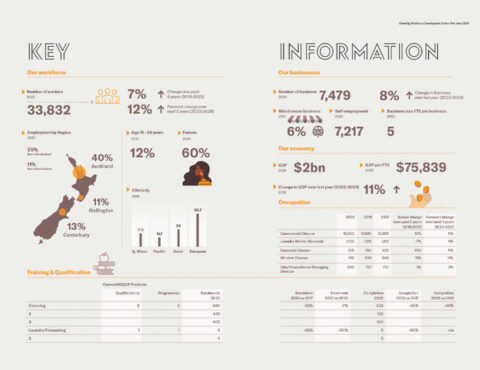
Explore Cleaning industry workforce demographic, business, and economy statistics, and education and training data.
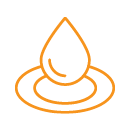
It is imperative for training programmes to remain current with industry advancements and prioritise workforce safety. This includes adopting emerging specialised cleaning skills such as chemical decontamination, which is increasingly prevalent. Presently, there is a noticeable absence of clear and consistent industry standard guidelines regarding methodology and their application.
Continual introduction of new surface materials requires regularly updating knowledge on suitable cleaning products for these surfaces.
Given that a significant portion of the workforce comprises English as a Second Language (ESL) speakers, there is a need for training materials to be simplified, employing less technical language. Also explore bilingual options. A greater emphasis needs to be placed on literacy and numeracy training.

Industry professionals find the duration of qualification processes too lengthy especially for those who are already in work and would like to explore approaches to fast-track completions while upholding rigorous standards.
Employers shoulder the full responsibility for training, yet the scarcity of qualified assessors poses a significant challenge, particularly for small to medium-sized businesses unable to afford dedicated assessors. Becoming an assessor proves cumbersome, a concern highlighted by employers. Streamlining this process could incentivise more individuals to assume this vital role.

Despite a projected 12% growth in employer numbers from 2023 to 2028, the industry grapples with a persistent high turnover rate among workers, largely stemming from a significant level of transience and a preference for short-term employment.
Shortages persist in leadership positions such as team leaders, supervisors, and management roles , with industry knowledge and expertise.
Cleaning roles could appeal to tangata whaikaha due to the flexible nature of the work, including work hours and locations.
The industry faces an aging workforce with fewer young entrants. Strategies to enhance retention rates include providing training investment and support, job stability, flexible work hours, competitive pay rates, diverse work locations, and fostering a positive team culture.

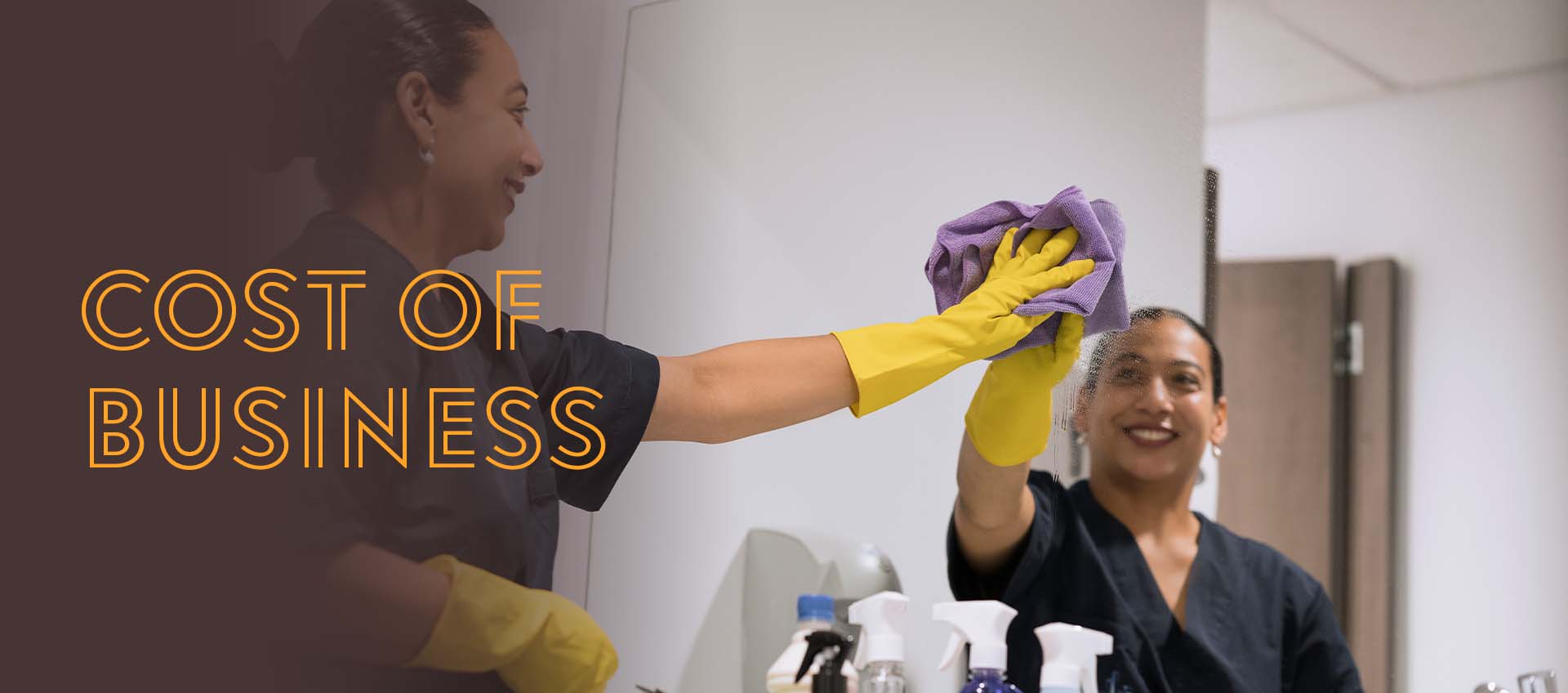
The affordability of operating costs is relative, influenced by each business’s specific circumstances and strategies. Effective cost management and strategic planning are essential for cleaning businesses to thrive in a competitive and dynamic market.
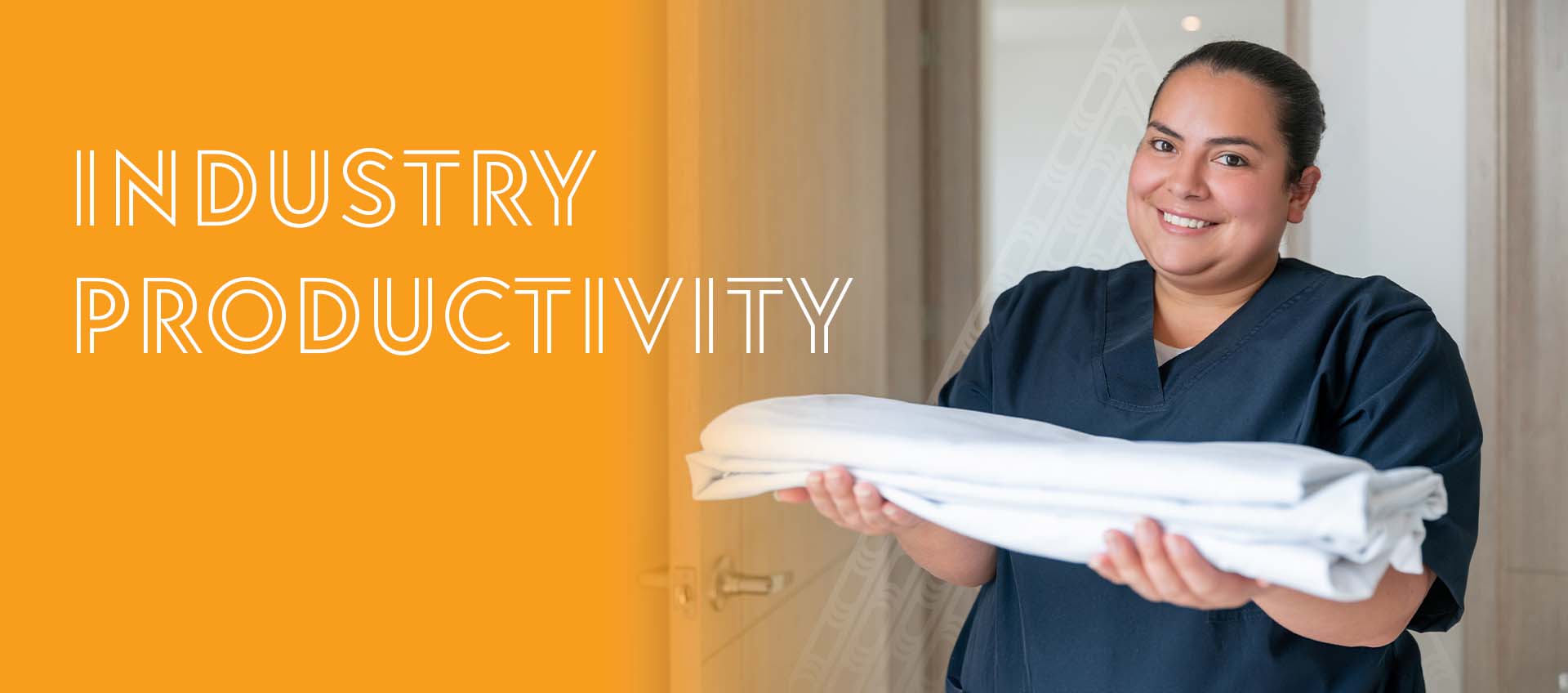

Approximately 6,000 workers in the cleaning industry are Māori. This is around 18% of the overall cleaning workforce, which is higher than the overall New Zealand workforce percentage of 13%.
Business ownership
Creating training opportunities for Māori cleaners to own their own cleaning businesses is a powerful strategy to future-proof the industry and empower workers, especially in the face of technological advancements.
Whānau Well-being and support
Whānau Well-being: Recognizing the importance of whānau (family) and providing support for workers’ family and community responsibilities.
Community Networks: Facilitating access to Māori community support networks and resources.
Literacy and numeracy
Many Māori workers have the industry experience and competency within their roles. In order for Māori workers to pursue higher-level credentials and leadership roles, literacy and numeracy training opportunities in the industry need to be more accessible.
Health and Safety
Ensuring workers have access to appropriate personal protective equipment (PPE) to safeguard against hazards. Providing regular health and safety training to prevent accidents and injuries on the job. Maintaining high standards of hygiene to protect both workers and clients.
Professional Development
Implementing on-going training programmes to improve skills and knowledge, ensuring staff are up-to-date with the latest cleaning techniques and technologies.
Creating clear pathways for career advancement which will motivate workers and reduce turnover.

Approximately 4,000 workers in the cleaning industry are Pacific Peoples. This is around 12% of the overall cleaning workforce which is higher than the overall New Zealand Workforce percentage of 6.5%.
Business ownership
Creating training opportunities for Pacific cleaners to own their own cleaning businesses is a powerful strategy to future-proof the industry and empower workers, especially in the face of technological advancements
Tailored training
The cleaning industry benefits from a significant number of Pacific workers, many of whom are second-language English speakers. To fully support their growth, it is essential that training materials are tailored to meet their needs. By understanding and addressing the specific needs of Pacific workers, and offering other support such as pastoral care, the industry can effectively support and retain this workforce.
Pacific are visual people. To demonstrate competency, industry is strongly encouraged to consider use of technology, such as video recordings for training and assessment purposes.
Literacy and numeracy
Many Pacific workers have the industry experience and competency within their roles. In order for Pacific workers to pursue higher-level credentials and leadership roles, literacy and numeracy training opportunities in the industry need to be more accessible.
Cultural sensitivity and respect
Ensuring workplaces are inclusive of Pacific cultural practices and traditions, including appropriate observance of culturally significant events.
Providing cultural competency training for employers and managers to better understand and support Pacific workers.
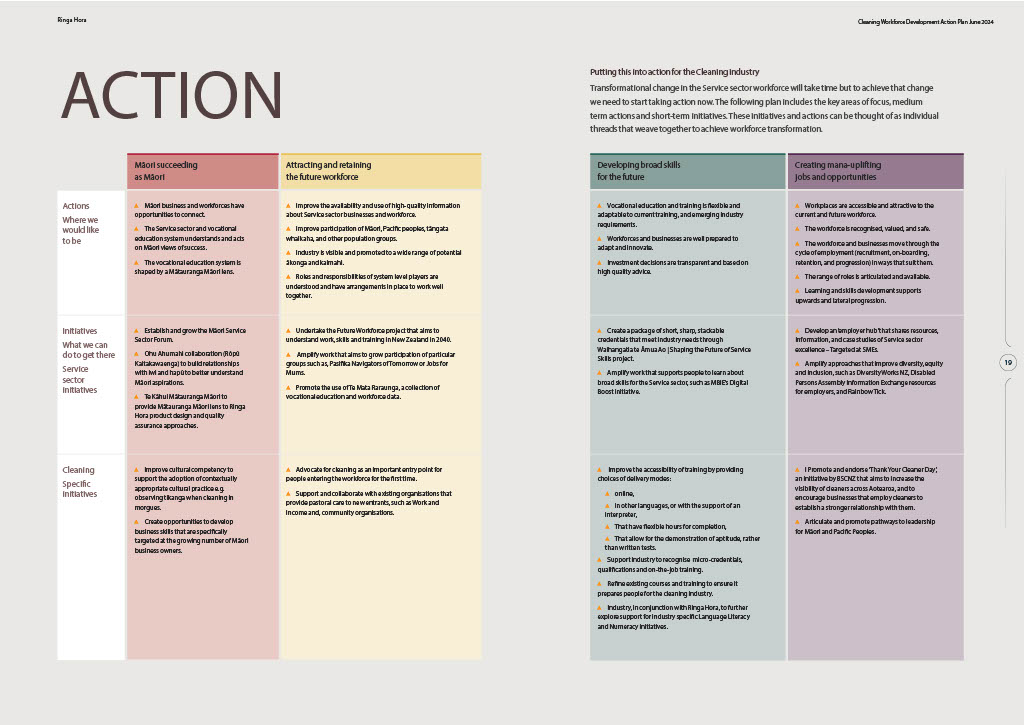
Transformational change in the Service sector workforce will take time, but to achieve that change, we need to start taking action now. The following plan includes the key areas of focus, medium-term actions and short-term initiatives. These initiatives and actions can be thought of as individual threads that weave together to achieve workforce transformation.
Download our actions and progress: